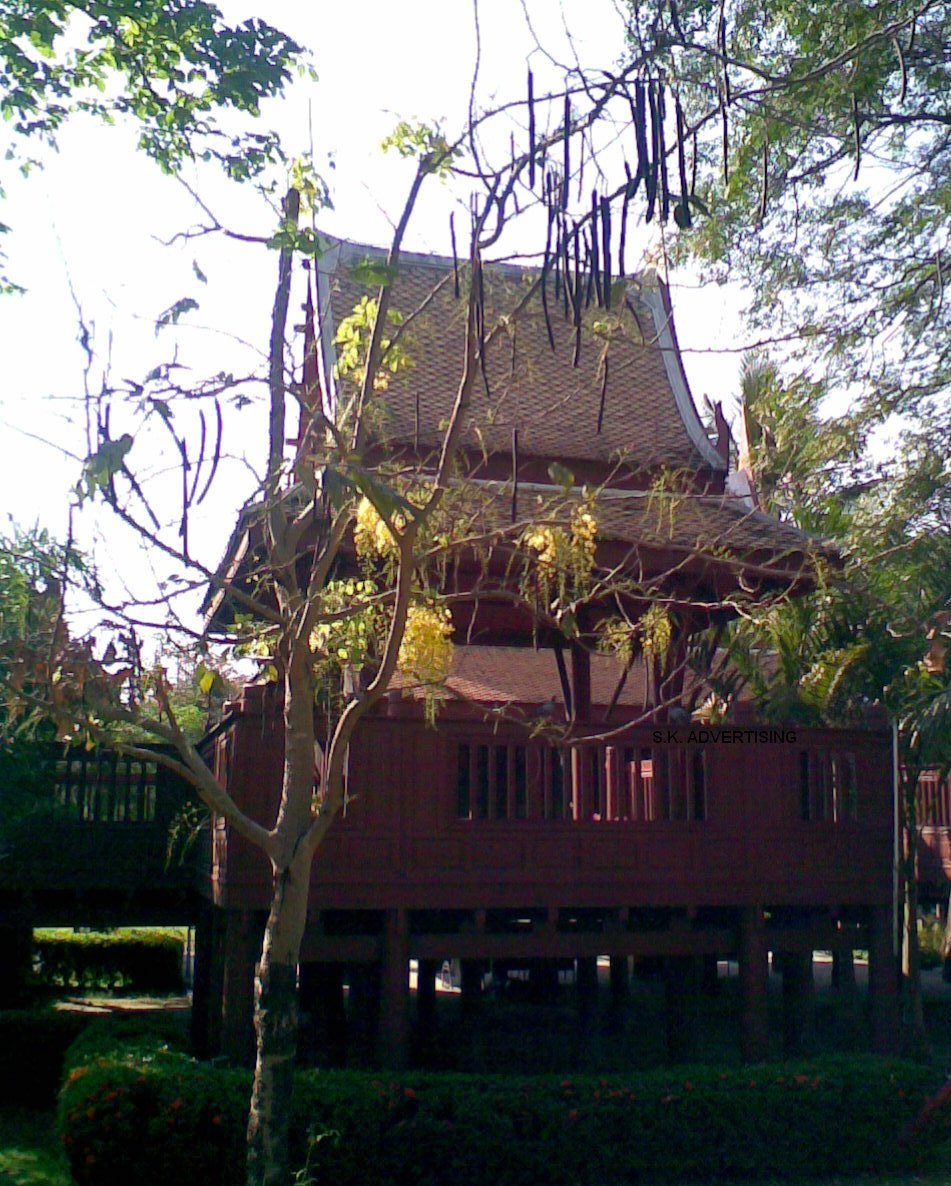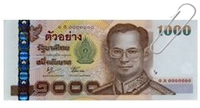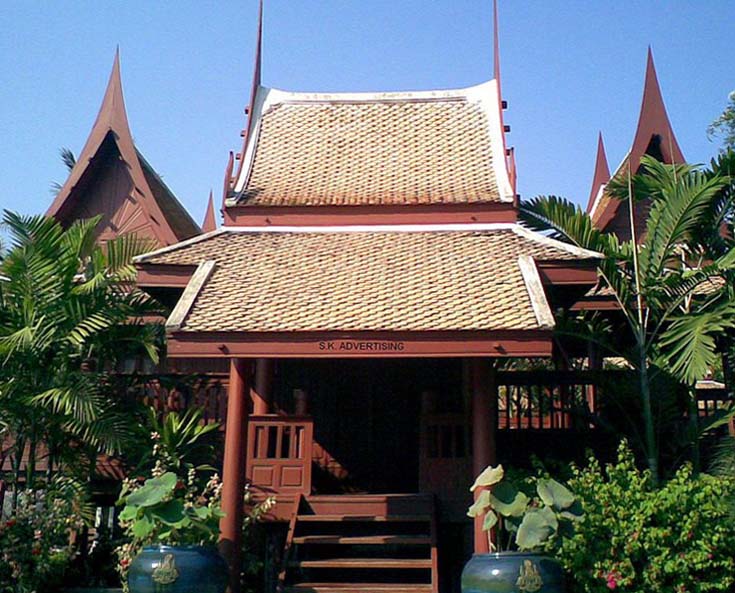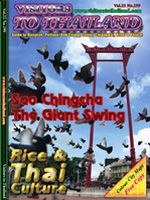Regardless
of weather conditions in Thailand the local created a "Thai Classical House" is
good to stand for the weather conditions of the country, whether it may
rain or shine. Thai Classical Houses are made up with many parts that
complement each other. In the old day, builders took the art of housing
as unique to Thailand. Basically, there are two main parts, namely, the
upper section is composed of "OKKAI" (Ridge
of Roof) which is a long wooden plank filled into an aperture of the
centrally pillars, coupled with "JUA"
(Gable) an apparatus made of a tangle-shaped wood to secure the roof
for protection against the wind and the sun. There is "CHANDAN"
(Rafter) looking like Jua but hollow, placed to receive the wooden
piece placed on purloin or lathes. There is "PANLOM"
(Ornamental Gable end) which is a pointed wooden piece placed Chandan
to fit in with "KLON" a piece of wood
placed atop Pae to serve as the structure for roofing. There is "RANEANG"
(Purloin) a piece of wood spliced lengthwise to place roofing tiles and
finally comes "CHERNG CHAI"(Eaves) a
piece of wood designed to receive the apart of the roof.
The aforementioned parts are called the "Upper Structure". When the
upper structure is filled into the lower section composed of
floorboards, the beauty of each Thai Classical House rested with a
thing called "PANLOM"

"
The
beauty of Thai Classical House
lies
in the fact that the whole structure
is
a product of individual pieces
fitted
together without using a nail. However, nails are used when the
structure is fitted to the pillars. Formally, builders used strings or
wires. Indeed Thai craftsmen did not rely on nails at all
"
as it is the
heart of the artistic construction. The advantage lies
in the fact that Thai Classical House can be moved from one place to
another one without damages or difficulties as they are not secured by
nails. An entire house can be moved by mean of rails. Thai Classical
Houses are not hot. They are standing tall, can let the wind pass
underneath with ease, with house spared from the force of the wind.
Moreover, people may sometimes rest under the house. It takes not more
than three months to make a Thai Classical House elsewhere without
trouble. A Thai Classical House has a long story. For example, Thais
choose the most auspicious month of a year to construct a home. Holes
are dug in the ground and placed with wood (the first pillar) with good
names and as a gesture of goodwill, before setting up the poles. The
direction to which a house faces is significant factor which must be
observed according to Thai custom in order to bring peace and happiness
to the members of a household.
Ancient craftsmen of Thailand invented this craft and passed it on from
generation to generation. Today, they stand as witnesses to the
glorious days of the past in the eyes of be holders in Thailand,
foreigners as well.










